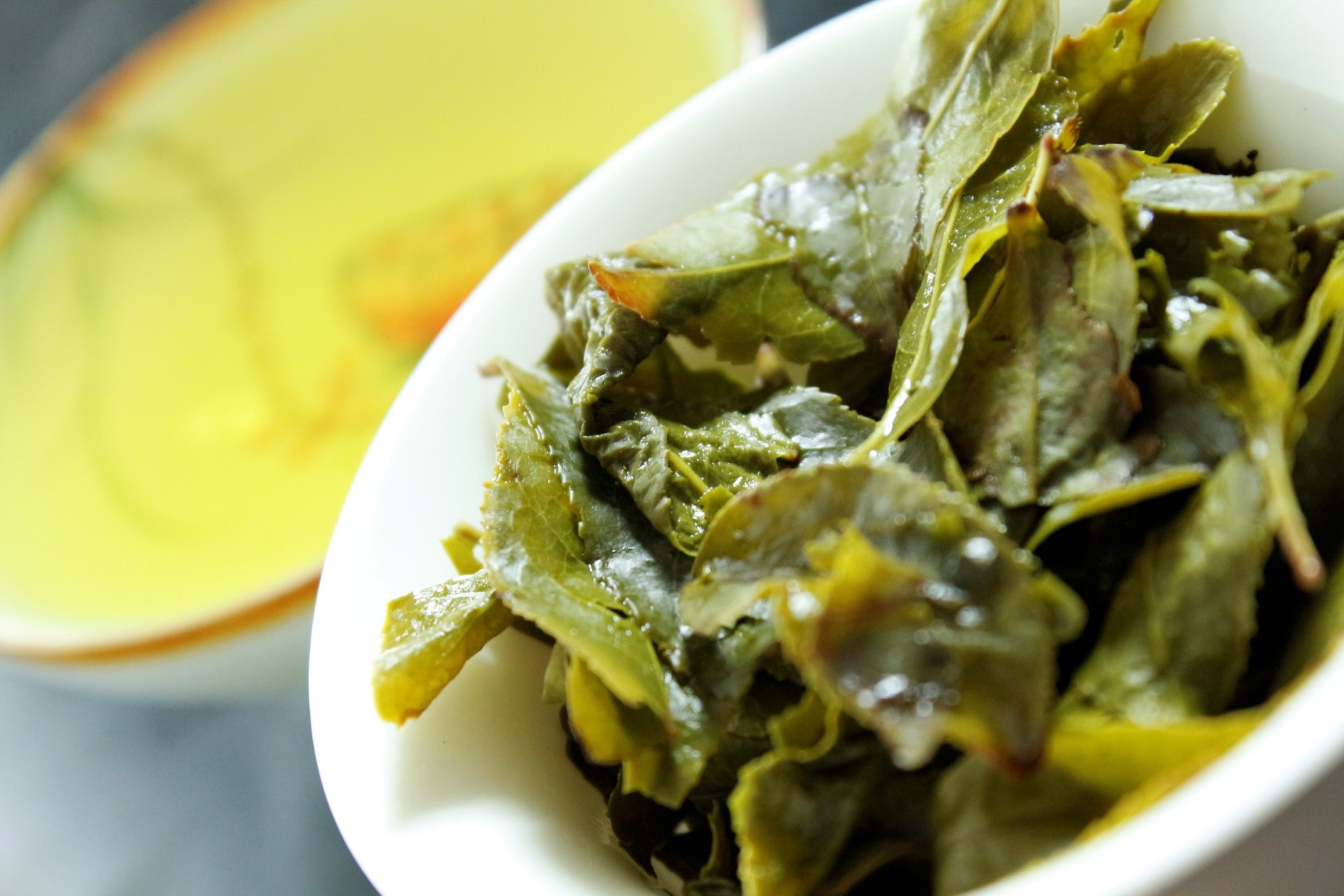
Tie Guan Yin (鐵觀音 , Tieguanyin , Iron Goddess Of Mercy) Oolong is renown these days for its super fresh green taste, although this style of processing isn’t traditional at all it has definitely helped to revive this oolong and bring it back into the spotlight to make it china’s number 1 selling tea!
The Lore and Origins:
There are two origin stories, Wang & Wei, let’s concentrate on the Wei story….it’s more fun!
Legend has it that a poor farmer in the Ming dynasty discovered a rundown temple dedicated to the Guanyin Bodhisattva. Filled with devotion, he decided to restore the temple, dedicating himself to the cultivation of tea in the surrounding hills. Guanyin, the goddess of compassion, appeared to him in a dream, revealing a tea plant hidden behind the temple. The farmer nurtured the plant and crafted a unique tea, which came to be known as Tie Guan Yin, meaning “Iron Goddess of Mercy.”

The Guan Yin Oolong Tea Styles:
I like to categorise Tie Guan Yin into several camps. Different levels of processing will create different styles although terroir / material quality is of course a factor:
Fresh / super green
Smooth / silky sweet floral / fruity
Umami / savoury
Traditional roast
Deep roast
Fresh: is a new (a few decades old) style of very light processing which will create the greenest , freshest thirst quenching tea you could ever imagine. It’s almost like drinking tree sap, if you could imagine. I had the honour of tasting a competition grade TGY, it was quite astonishing. Before the era of this style, TGY was lightly roasted. This fresh style really needs to be drunk within 1 year for optimal flavour.
Smooth Sweet: this style carries much less emphasis on fresh and instead brings out sweet and fruity / floral flavours with a smooth mouthfeel.
Umami: savoury aroma with seaweed like flavours. Not a particularly popular style but very worthy of exploration.
Traditional Roast: longer processing creates a honey sweetness with deeper flavour profile. Normally this style is comprised of material that didn’t sell within the year or have been held back purposefully. The further processing will lock in the aroma making it very suitable for drinking up to around 2.5 years.
Deep roast: Traditional roast Tie Guan Yin after several years will be ‘seal roasted’, permanently locking in aroma for long term storage. These teas have a strong , deep roasted flavour, are quite rare and in some demand with enthusiasts. The flavour will generally enhance over the years but be sure to store in low humid conditions for the long haul.
Production Process:
Cheaper grades are chopped by machine with medium to higher grades Being plucked by hand. You can tell by looking at the leaf, is it whole or chopped? Chopped leaf will be more astringent. The leaves then undergoes a series of steps, including withering, oxidation, rolling, and roasting. The length of these steps varies depending on which style the producer wants to create.

Withering: Freshly plucked leaves are spread out to wither, allowing moisture to evaporate and altering their chemical composition.
Oxidation: The withered leaves are shaken or tossed in bamboo baskets to bruise the edges, initiating the oxidation process. This step is crucial in developing the tea’s distinctive flavor.
Rolling: The leaves are gently rolled, shaping them into tight, curly balls. This process helps break down the cell walls and further enhance oxidation.
Roasting: The rolled leaves are roasted in high-temperature ovens, halting the oxidation process and preserving the tea’s unique characteristics. Roasting also imparts a roasted aroma and smooth texture to the tea.
Grading:
Tie Guan Yin Oolong comes in various grades. The grading system is based on factors such as leaf appearance, aroma, taste and processing style. Top-grade Tie Guan Yin can go for £280 per 100g.
Brewing Techniques:
Tie Guan Yin will do well in a big teapot (Western Teapot Style) but you will gain more control over your brewing which results in more subtle nuances and less astringency when brewing Gong Fu style. Gong Fu is a style of brewing where you have a series of infusions in a lidded bowl. Use boiling water 100 C and always use filtered water or economical spring water from the supermarket. Please don’t use chlorinated tapwater, it will destroy your flavour!
Thank you very much for getting to the end of my blog I really appreciate your reading. Please take a look in our oolong tea section for all of our Tie Guan Yin offerings!
